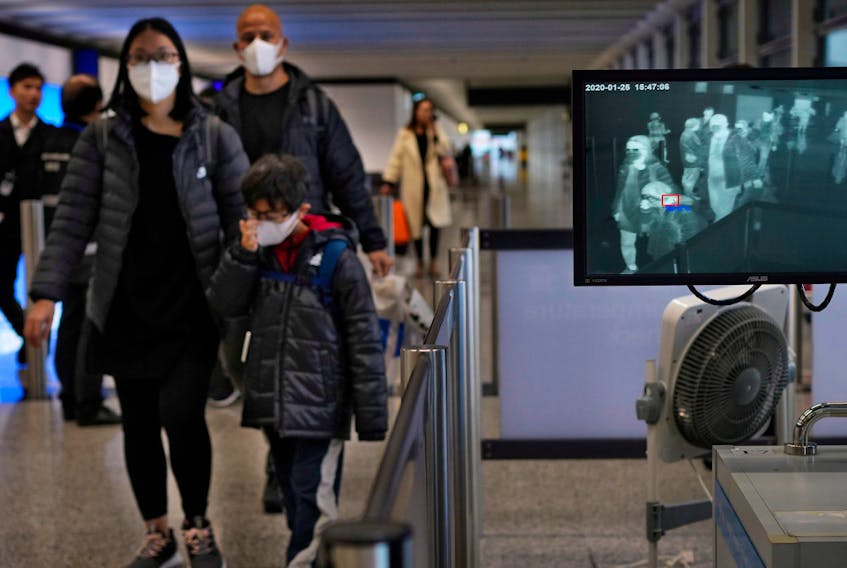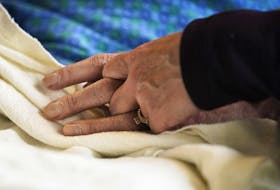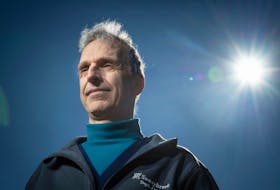For the second time in 17 years, Canada’s largest city has become this country’s ground zero in the fight to contain an outbreak of a newly identified organism that is spreading worldwide.
A Toronto man in his 50s was confirmed Sunday as Canada’s first presumed case of the rogue virus known as 2019-nCov, a coronavirus that surfaced in the Chinese city of Wuhan on New Year’s Eve. Officials are urging calm as they work to contain the illness in Canada and rapidly trace passengers who were seated within a two-metre radius of the man, who was already experiencing symptoms when he boarded his transoceanic flight home to Toronto.
The man flew from Wuhan to Guangzhou and from there to Toronto, arriving at Pearson International Airport Wednesday on China Southern Airlines flight CZ311. Upon arrival at Toronto, the man did not report to border-service officers that he was feeling ill, despite “detection” measures at the airport, which includes screening questions at electronic border kiosks that ask about previous travel to Wuhan in the past 14 days and remind people to report flu-like symptoms to border service agents.
Fact sheets in English, French and Chinese have also been developed that outline flu-like symptoms people should watch for and to seek medical attention should they start feeling sick.
Instead, the man went home. The next day a family member called 911 to report he was feeling ill, and that he had recently travelled to Wuhan. Paramedics, donned in protective gear, took him to Sunnybrook Health Sciences Centre, where he was immediately placed in isolation in a negative-pressure room. He was listed in stable condition Saturday. The man’s family is also in self-isolation.
When asked at a press briefing Sunday if the man reported symptoms to border-service agents at the Toronto airport, Dr. Theresa Tam, Canada’s Chief Public Health Officer, responded, “This patient was not reported to us, no.”
After he became more ill, “when he needed medical support, in fact he followed all the information provided at the airport,” federal health minister Patty Hajdu said. “For me, that is a sign that the information at the border did actually percolate through to the patient and his family.”
“The system is working and the person obviously got the information that they needed to enter the health system in a safe and responsible manner,” Tam added.
Using the plane’s seating charts, Toronto public health officials are contacting passengers of flight CZ311 who may have had close contact with the man, particularly those who had “prolonged contact.”
“We are informing these people that they may have been exposed to a potential health risk, what signs and symptoms they should look out for and when and what type of medical treatment should be sought out, if that becomes necessary,” Toronto’s medical officer of health Dr. Eileen de Villa said in a statement Sunday.
Tam said passengers who aren’t contacted by public health authorities shouldn’t be overly concerned.
But there were already signs of alarm and confusion. Local hospitals reported that people were showing up in emergency without signs of illness — and not just people who were on the flight, but people from the general public. “The risk to our community remains low,” she said.
On social media, some were wondering whether it was safe to go Sunnybrook. One man, whose wife is 39 weeks pregnant and scheduled to deliver at Sunnybrook, wondered if he could get referred to a different hospital for the delivery. Sunnybrook said it is operating “as per normal” and that the hospital is safe for patients and visitors.
The Toronto man “has been managed with all appropriate infection and prevention control protocols, so the risk of onward spread in Canada is low,” Tam said.
“Nevertheless it would not be unexpected that there will be more cases imported into Canada in the near term given global travel patterns.” Nine other suspected cases in Ontario alone were under investigation as of Sunday.
Testing by Canada’s national microbiology lab in Winnipeg is expected to be complete in the next 24 hours to confirm the man’s diagnosis. As of Sunday evening, he was considered Canada’s “first presumptive confirmed case.”
The outbreak of the novel coronavirus has put more than 50 million people in effective quarantine in China and new research is raising fears of “substantive” human-to-human transmission. Officials have restricted travel in Wuhan and 16 other cities. China is scrambling to halt spread of the virus, which has sickened at least 1,975 people, killing 56. The virus, which causes respiratory illness and pneumonia, has spread to Europe and North America. The fourth U.S. case was confirmed Sunday, the most recent in Los Angeles County.
Like SARS, which killed 44 people in Toronto in 2003, the new coronavirus is thought to have jumped to humans from bats, though it hasn’t been confirmed.
However, so far the difference for front-line nurses “is like night and day,” said Doris Grinspun, CEO of the Registered Nurses’ Association of Ontario, who lived through the SARS epidemic. “Last time we felt like orphans,” she said. Nurses this time are feeling well protected. “Those at Sunnybrook feel very protected. The senior nurse at Sunnybrook said the mood is very good,” Grinspun said.
With SARS, hospitals served as “amplifiers of transmission,” Paul Hunter, of the Norwich School of Medicine said. “Super spreaders” who shed large amounts of virus also helped SARS along.
It’s been estimated that, on average each case in China infected 2.6 other people up to Jan. 18. But it’s theoretical modelling based on assumptions like population density and travel that don’t necessarily apply globally.
The World Health Organization last week stopped short of calling the outbreak a global health emergency. But China’s health minister warned this weekend that that the virus is at a “crucial stage of containment.”
Droplets spread the virus, and studies published Friday in The Lancet report that people can become infected but have no symptoms, or very mild symptoms, making the virus harder to contain. Nearly one-third of the first 41 confirmed cases of the virus developed acute respiratory distress syndrome, or needed intensive care.
Despite sharing similar symptoms to SARS — like fever, dry cough and shortness of breath — runny nose, sneezing and sore throat are less common with the new coronavirus.
The detection system relies on people to report symptoms, “so that’s obviously a limitation,” said Matthew Miller, associate professor at the Michael G. DeGroote Institute for Infectious Diseases Research at McMaster University. “There’s a certain amount of the infection control system that relies on people’s proclivity to self-report.”
“You can’t rule out that anyone who came into contact with this person, no matter how brief that contact was, could have been infected. But the likelihood is extremely low,” he said.
“The real risk would have been for people in his immediate vicinity for prolonged periods.”
Copyright Postmedia Network Inc., 2020









